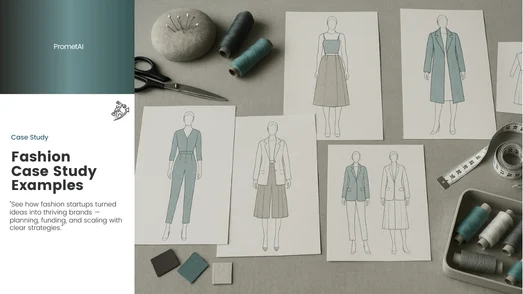Case Study 4: How Everlane Built Fashion Brand Trust Through Radical Transparency
When Everlane launched in 2010, it entered the fashion world with a radically different playbook. Based in San Francisco, this direct-to-consumer ethical fashion brand challenged industry norms by committing to radical transparency fashion as its central promise. Instead of hiding costs and supply chains behind marketing gloss, Everlane revealed the truth.
In doing so, it quickly became one of the first sustainable fashion startups to gain traction by showing customers not only what they were buying, but also how much it cost to make, where it was made, and who made it. The Everlane business model disrupted conventional pricing and established the brand as a new kind of ethical fashion house rooted in transparency and trust.
About the Business
Name: Everlane
Location: San Francisco, USA
Type: D2C ethical fashion brand
Founded: 2010
Founder: Michael Preysman
https://www.everlane.com/
The Challenge - How to Justify Premium Pricing in a Cost-Conscious Market
Competing against fast fashion was an uphill battle. Giants like Zara, H&M, and Forever 21 dominated with low prices and global reach. For Everlane, producing ethically meant higher expenses, which clashed directly with consumer expectations of affordability. The main challenges included:
Ethical fashion pricing challenges: Producing garments with fair labor and sustainable practices inherently cost more, while consumers were conditioned to expect cheap alternatives.
Sustainable fashion cost justification: Customers needed convincing that paying more was worth it for values that were largely invisible in the final product.
Premium pricing strategy fashion: With no retail presence or luxury credentials, Everlane had to explain why its products carried higher prices than fast fashion equivalents.
Consumer price sensitivity fashion: Cost-conscious shoppers often prioritized bargains over values, and Everlane risked being dismissed as too expensive.
Ethical production costs: Factory audits, fair wages, and environmental safeguards all increased operational overhead.
Fashion brand trust building: Without industry endorsements, celebrity backing, or established credibility, Everlane had to build trust entirely from scratch.
The company was effectively trying to prove that ethical fashion could be premium, scalable, and desirable in a market addicted to disposable trends.
The Solution - How to Use Transparency as Competitive Advantage
Here are the solutions that proved transparency could build both trust and growth in fashion:
Radical Transparency Marketing and Pricing
Everlane didn’t just talk about transparency, it made it the product. Each item came with a full cost breakdown, showing materials, labor, duties, transportation, and even the company’s margin. What most brands hid, Everlane exposed. This radical transparency marketing strategy reframed pricing as education, giving consumers insight into the real economics of fashion. By owning the narrative, the brand built credibility and positioned itself as the honest alternative in an industry long driven by smoke and mirrors.
Ethical Factory Partnerships That Validated the Mission
The company’s ethical factory partnerships were central to differentiation. Everlane only sourced from facilities that met strict standards for fair wages, safe working conditions, and environmental practices. By showcasing detailed content, factory tours, worker interviews, and audit results, it proved that ethical production costs were not abstract claims but tangible commitments. These stories connected customers emotionally to the brand’s ethical fashion brand identity.
D2C Fashion Model for Control and Cost Efficiency
From the start, Everlane was designed as a D2C fashion strategy. By eliminating wholesalers and retailers, it removed traditional markups, controlled brand presentation, and passed savings back to consumers. This direct-to-consumer fashion model not only reduced costs but also allowed Everlane to fully own the customer relationship, aligning perfectly with its positioning as a sustainable fashion startup built on authenticity.
Content-Driven Customer Education
Rather than relying on celebrity endorsements or high-budget campaigns, Everlane focused on email marketing fashion, and direct communication. Its campaigns taught consumers about the true cost of sustainable fashion production, explained the impact of choosing ethical factory partnerships, and reinforced the value of its transparent pricing model. This authentic sustainability communication nurtured long-term trust and made customer loyalty a byproduct of education.
The Results - How Transparency Drove Fashion Brand Growth
Everlane’s approach created a measurable impact. By 2015, the company had grown annual revenue to more than $100 million. What set it apart wasn’t only financial performance, but also the depth of loyalty and credibility it created in a skeptical market.
Revenue scaled rapidly because customers felt confident paying premium pricing once they understood the sustainable fashion cost justification.
Customer loyalty rates were two to three times higher than fast fashion averages, driven by consistent proof of values.
Within five years, Everlane evolved from an unknown startup to a global benchmark for radical transparency fashion and became a recognized ethical fashion brand with industry-wide influence.
Metric | Before (2010) | After (2015) | Change |
Annual Revenue | $0 | $100M+ | Rapid scaling |
Customer Loyalty Rate | Unestablished | 2-3x fast fashion average | Superior retention |
Industry Recognition | Unknown startup | Model for ethical D2C brands | Industry leadership |
Brand Trust Metrics | No established trust | Premium positioning credibility | Strong differentiation |
Development Path - How to Scale Transparent Fashion Brand
The ethical fashion brand timeline highlights how Everlane evolved from an experiment to an industry leader.
In 2010, the company launched as an online-only platform, betting on digital-first distribution to keep overheads low. By 2015, its momentum accelerated as consumers reacted against fast fashion scandals, amplifying Everlane’s transparent fashion growth phases. In 2017, it opened its first offline stores, proving that D2C fashion expansion strategy could translate into physical retail.
From 2020 onward, Everlane broadened its offering with shoes, denim, and accessories, showing how sustainable fashion scaling could blend premium quality with ethical values at scale.

Key Takeaways - How to Use Transparency for Fashion Brand Differentiation
The Everlane story reveals that in fashion, honesty can be as powerful as design.
Transparency as differentiation: Revealing true production costs creates trust and credibility that traditional fashion marketing cannot match.
D2C advantages fashion: Direct-to-consumer control removes retail inefficiencies, allowing both cost savings and stronger brand narratives.
Customer trust building fashion: Education and honesty enable premium pricing justification, turning skeptics into brand evangelists.
Authentic fashion branding: Storytelling rooted in truth fosters loyalty stronger than celebrity endorsements or seasonal trends.
Everlane proved that fashion brand transparency benefits go beyond goodwill; they create enduring market power. By fusing ethical values with bold storytelling, the brand didn’t just build a clothing company; it redefined what modern consumers expect from a sustainable fashion startup.
Cross-Case Analysis: Universal Lessons for How to Start a Successful Fashion Brand
Fashion today is not about who stitches the best seams. It is about who dares to challenge assumptions, rewrite the rules, and turn bold visions into lived reality. Four different brands, Rent the Runway, Stella McCartney, Shein, and Everlane, show us that there is no single playbook. Yet together, they reveal universal lessons on how new fashion businesses can rise, thrive, and disrupt.
Market Creation and Positioning Strategies
Rent the Runway reminds us that markets are not found; they are taught into existence. No one asked to rent dresses in 2009, yet through campus trials and persistent storytelling, the company rewired consumer behavior and pioneered a brand-new category. This is a fashion market creation strategy at its boldest.
Stella McCartney, meanwhile, mastered the art of turning values into luxury. Where others saw compromise in leather-free collections, she saw distinction. Her first-mover advantage in sustainability built an aura of authenticity that competitors could never retrofit. In her case, ethics did not weaken positioning - they sharpened it.
Everlane went in another direction altogether: weaponizing honesty. By showing customers the raw math of production costs, it reframed transparency as the new badge of exclusivity. This fashion differentiation strategy proved that trust, when radical and visible, could justify premium prices in the most cost-conscious markets.
Technology and Operations Innovation
Fashion has always been about creativity, but today the real breakthroughs often happen behind the screen. Shein’s rise is the clearest example. Instead of relying on designers’ intuition, it deployed a data-driven fashion strategy, mining billions of signals from social media and searching to anticipate demand. In doing so, it showed how fashion technology innovation can move faster than human imagination.
Mobile commerce gave Shein another advantage: while rivals carried the weight of retail stores, Shein built a viral, mobile-first engine that lived on the same devices where trends were born. Fashion became less about shop windows and more about swipes and shares.
Operational excellence, though quieter, proved equally decisive. Rent the Runway mastered supply chain optimization in fashion, not by chasing glamour but by obsessing over logistics. Industrial dry cleaning and reverse logistics aren’t runway-worthy topics, yet they have become the backbone of consumer trust. In fashion, as these cases show, execution is as much a brand builder as aesthetics.
Business Model and Revenue Innovation
Behind every strong fashion brand is a model that makes the vision sustainable. Rent the Runway pioneered the subscription fashion model, transforming fashion from a one-off purchase to a recurring service. This shift didn’t just stabilize revenue; it locked customers into long-term relationships with the brand.
Everlane proved that D2C fashion advantages extend beyond margins. By selling directly to consumers, it controlled the entire brand story from the way prices were explained to the way garments arrived on doorsteps. The result was not just higher efficiency, but deeper credibility.
Stella McCartney demonstrated that no brand grows in isolation. Her fashion business model innovation came through partnerships: Adidas validated sustainability in sportswear, while LVMH gave her the scale to compete at the top tier. These collaborations amplified impact, showing that strategic alliances can accelerate even the most values-driven brands.
The Big Picture
Across these four cases, one truth is clear: the future of fashion belongs to brands that don’t just follow culture - they shape it. Rent the Runway taught women to rent. Stella McCartney made sustainability the language of luxury. Shein used algorithms to outpace heritage giants. Everlane turned transparency into currency.
For founders and innovators, the message is simple but demanding. To start a successful fashion brand, you must do more than design clothes - you must design new behaviors. Education, technology, operations, and models are your tools. The payoff? Not just a company, but a category.
Key Lessons from the 4 Fashion Case Studies
Rent the Runway - Market Creation through Education
Turned the radical idea of renting clothes into mainstream fashion-as-a-service. Success came from consumer education, operational excellence, and subscription loyalty that transformed behavior and built an entirely new category.
Stella McCartney - Sustainability as Luxury Differentiation
Proved that leather-free, cruelty-free luxury fashion could be both ethical and premium. Early adoption of sustainable fashion positioned the brand as an industry pioneer, showing that values can elevate brand prestige.
Shein - Data as the New Designer
Disrupted fast fashion giants by using algorithm-based fashion, big data analytics, and mobile-first strategy to predict trends and deliver products in days. Technology and supply chain innovation redefined speed and scale in fashion.
Everlane - Trust Through Radical Transparency
Built a D2C ethical fashion brand by revealing the true costs of production. Radical transparency turned pricing into education, fostered trust, and justified premium positioning in a cost-sensitive market.

